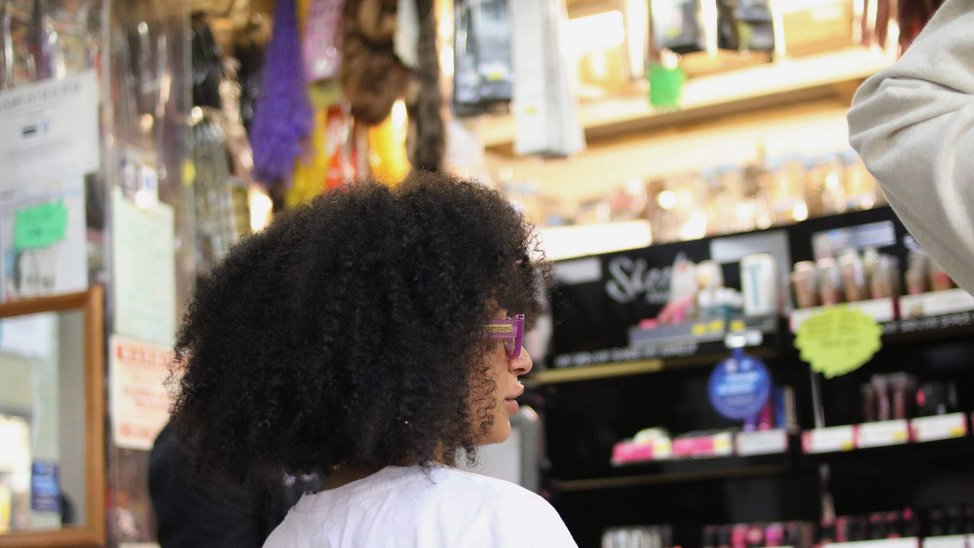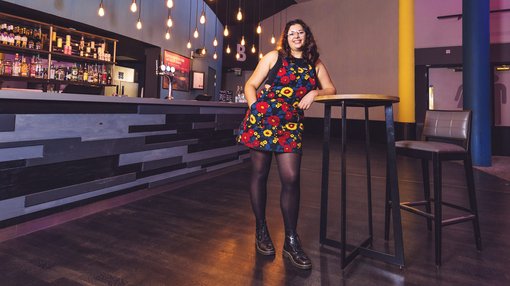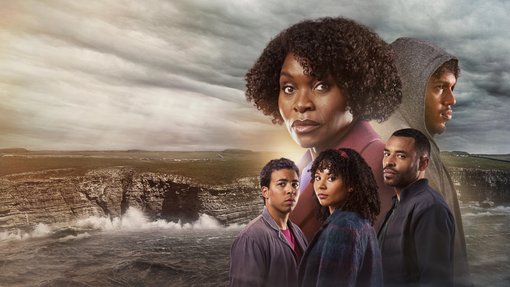The Black & Beautiful in Britain series was produced in partnership with Yahoo
In 2006, when India Arie released the single ‘I Am Not My Hair’, my 15-year-old self joined the conscious army in declaring that I indeed was not my hair. Too young to really understand the deeper concepts of the song, I would tell friends “I am not my hair” to avoid having to explain the Jamaica shaped scab near my temple from a hair straightener, and why my new hair looked more like a sun visor than a fringe. If “bad hair days” also described the health of your hair and not just the aesthetic, then it was safe to say I have spent over two thirds of my life having bad hair days.
While I can reflect back and laugh at some of the extreme DIY haircare tricks I used to use, it also highlights a very real and painful reality that black haircare was not a priority in Wales; it wasn’t even a minoritised service, it was practically non-existent. This wasn’t an experience exclusive to me and my friends in Newport, South Wales. A survey commissioned by Black Ballad, found that 27%* of respondents from Wales travelled 45 minutes or more to get to their nearest beauty store with 66%* of respondents finding it difficult (to some degree) finding hair products and 41%** of respondents finding it “very difficult” to source a professional hairdresser.

Being a teenager, I spent copious amounts of time testing out home remedies on my hair before school. On good days I managed to gel, mousse and hairspray my hair flat for a few hours. On bad days, I prayed that no one pulled my hood down and I could make do with a flat-ironed fringe. If you didn’t own a hair straightener, then a tea towel and a clothing iron would do the trick. There was one more get-out-of-hair-jail free card on bad hair days, and that was if one of the few other black girls had worse hair than you. It was essentially the Hunger Games of bad hair bullying and shame – may the odds be ever in your favour.
There was always that girl who never had to dodge the politics of unkempt hair: the girl who could braid. It is still an unsolved mystery, how that one girl just had the skills to braid hair into any and every pattern. In my school “that girl” was my best friend, Lateesha. When an under 18s club night was approaching, Teesha would literally hang out the front of her living room window doing people’s braids because her mum laid down the law: “This house isn’t an open youth club or a hostel – no more kids in and out!”
At 13-years-old, Teesha would travel to Ally and Kitty’s hair shop in St Pauls, Bristol – approximately 30 miles and 80 minutes by public transport. The week running up to her trip, orders would pour in from school: Jamm Extra Hold gel, Blue Magic Conditioner, Pink Leave-In Curl Cream and Dark & Lovely Beautiful Beginnings Relaxer were jotted down. Combs, elastics, scrunchies, a Denman brush – and if you owned a Denman brush, then you had made it. If you missed out on ordering, or if you didn’t have any money, then who knew how many bad hair days lay ahead.

There was, of course, a small chance of saving grace: the bi-annual trip to get ‘singles’ or box braids. This was a whole weekend affair; you would travel across the country to Slough, Manchester, Luton or Birmingham, sit in a stranger’s house for eight hours – dead still, no break – and get your hair braided. During the process it felt like a test of endurance where only the fittest would survive. You would literally be 11-years-old with backache from sitting on a pillow on the floor for hours on end, but that final result, wow, that final result was so worth it! You would strut into school, braids swinging down your back soaking up all the compliments. Teacher would say, “Wow, your hair has grown, I didn't realise it was so long!” You would wear your badge of survival for everyone to see. “How long did it take to do?” “Twelve hours” you would reply, adding a bit of extra time for dramatic impact.
Navigating a hair care routine in South Wales pre-YouTube and online shopping was tough for any person needing a conditioner more specialised than Herbal Essences. Now, you can find how-to-guides for protective hair styling and home haircare treatments within a few clicks. The past process of hair care for black hair was character building; you had to be creative and skilful with next to no resources. It was one trial and error situation after another, and yet, the black hairstyles of the noughties still set trends and showcased the versatility of our crowns.
*A total of 79 respondents participated in this response
** A total of 70 respondents participated in this response
More stories from black women in wales

Taylor Edmonds
Welsh-Cape Verdean Playwright Nia Morais On Making A Career In Theatre
Friday 2 June 2023 8:00 AM

Jasmine Lee-Zogbessou
Rakie Ayola On The Pact S2 & Giving Black Women Their Flowers
Tuesday 25 October 2022 8:00 AM
Taylor Edmonds
Kima Otung On The Music Industry, Growing Up In Wales & More
Friday 1 October 2021 11:00 AM
Tobi Oredein
Founder's Letter: Why's There A Lack Of Solidarity For Mohamud Hassan?
Sunday 17 January 2021 10:15 PM